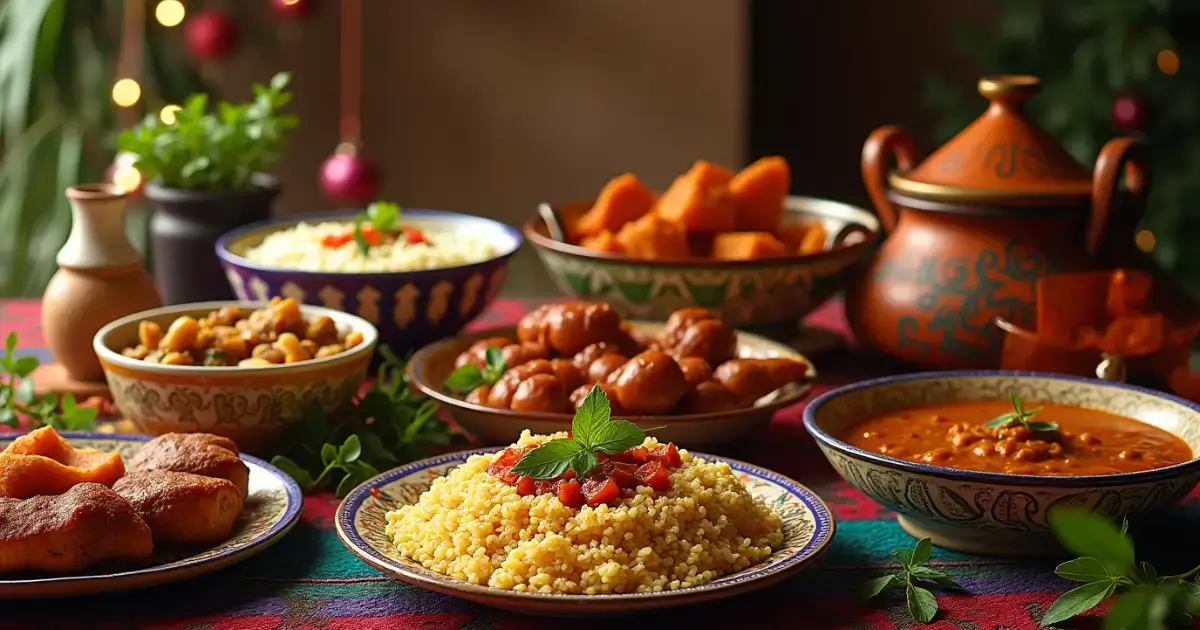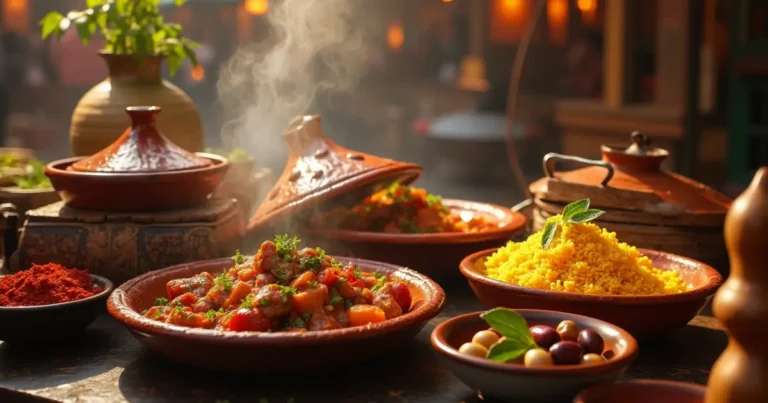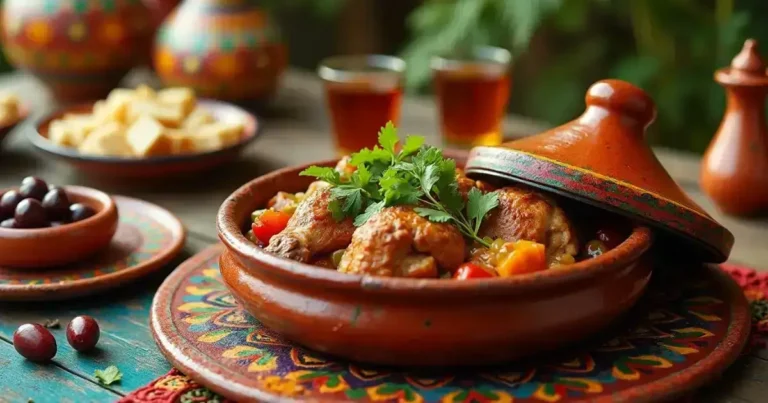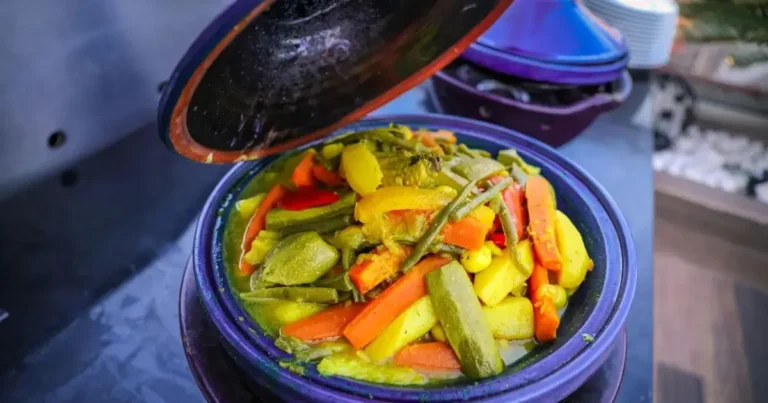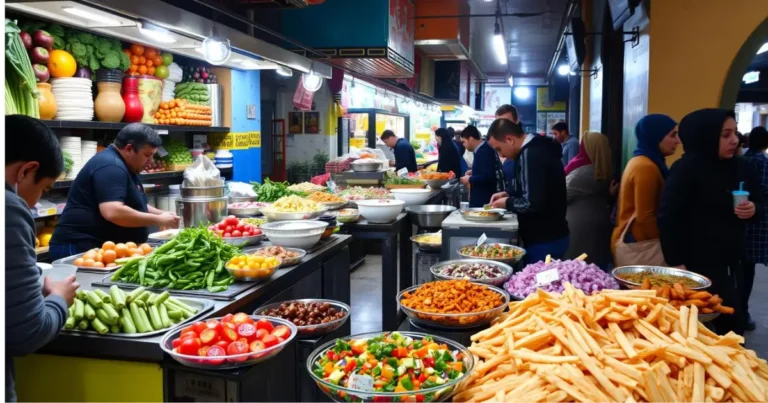10 Must-Try Moroccan Dishes That Will Transport Your Taste Buds
Table of Contents
10 Must-Try Moroccan Dishes That Will Transport Your Taste Buds
Moroccan cuisine is more than just food—it’s a sensory experience that tells the story of a rich and diverse cultural heritage. With its vibrant colors, aromatic spices, and bold flavors, Moroccan food is a delightful blend of Berber, Arabic, Andalusian, and Mediterranean influences. Each dish is a testament to the country’s history, geography, and traditions, making it a must-try for any food lover. In this article, we’ll explore the essence of Moroccan cuisine, from its iconic dishes to its dining traditions, and discover why it continues to captivate the world.
Culinary Insights and Influences: The Heart of Moroccan Food
Moroccan cuisine is a symphony of flavors, where every ingredient plays a crucial role. The use of fresh, locally sourced produce and a variety of spices creates dishes that are as visually stunning as they are delicious. Here are some key elements that define Moroccan cooking:
1. A Spice Lover’s Paradise
Spices are the soul of Moroccan cuisine. Cumin, saffron, ginger, and cinnamon are just a few of the essential spices that add depth and complexity to dishes. These spices are often combined to create ras el hanout, a signature Moroccan blend that translates to “top of the shop” and is used in everything from tagines to couscous.
2. The Role of Olive Oil
Did you know that Morocco is the 5th largest producer and exporter of olive oil in the world? This golden liquid is a cornerstone of Moroccan cooking, used generously in salads, stews, and even desserts. Its rich, fruity flavor enhances the natural taste of ingredients, making it indispensable in the Moroccan kitchen.
3. Staple Ingredients
Couscous, lamb, olives, and a variety of vegetables like eggplant, zucchini, and tomatoes are staples in Moroccan cuisine. These ingredients form the foundation of many dishes, reflecting the country’s agricultural abundance and culinary creativity.
Savory Moroccan Delicacies: A Feast for the Senses
Moroccan cuisine is renowned for its savory dishes, each offering a unique combination of flavors and textures. Let’s explore some of the most beloved Moroccan delicacies:
1. Tagine Dishes
The tagine is both a cooking vessel and a dish, named after the earthenware pot with a conical lid in which it’s prepared. This slow-cooked masterpiece typically combines tender meat (such as lamb or chicken) with vegetables, dried fruits, and a medley of spices. The result is a melt-in-your-mouth dish that’s as comforting as it is flavorful.
2. Khobz (Moroccan Flatbread)
Khobz is a round, slightly chewy flatbread that’s a staple in Moroccan households. It’s often used to scoop up stews, dips, and salads, making it an essential part of every meal. Freshly baked Khobz has a rustic charm that perfectly complements the bold flavors of Moroccan cuisine.
3. Harira (Hearty Soup)
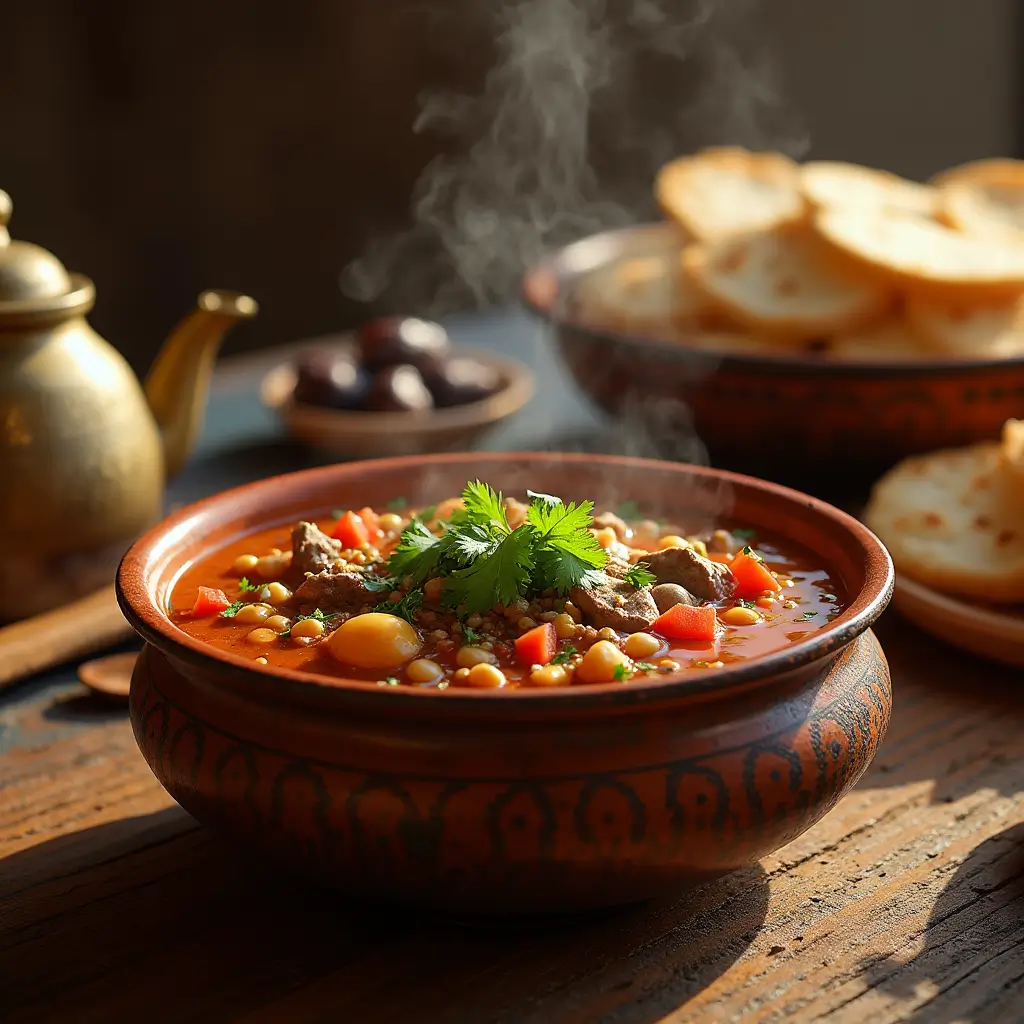
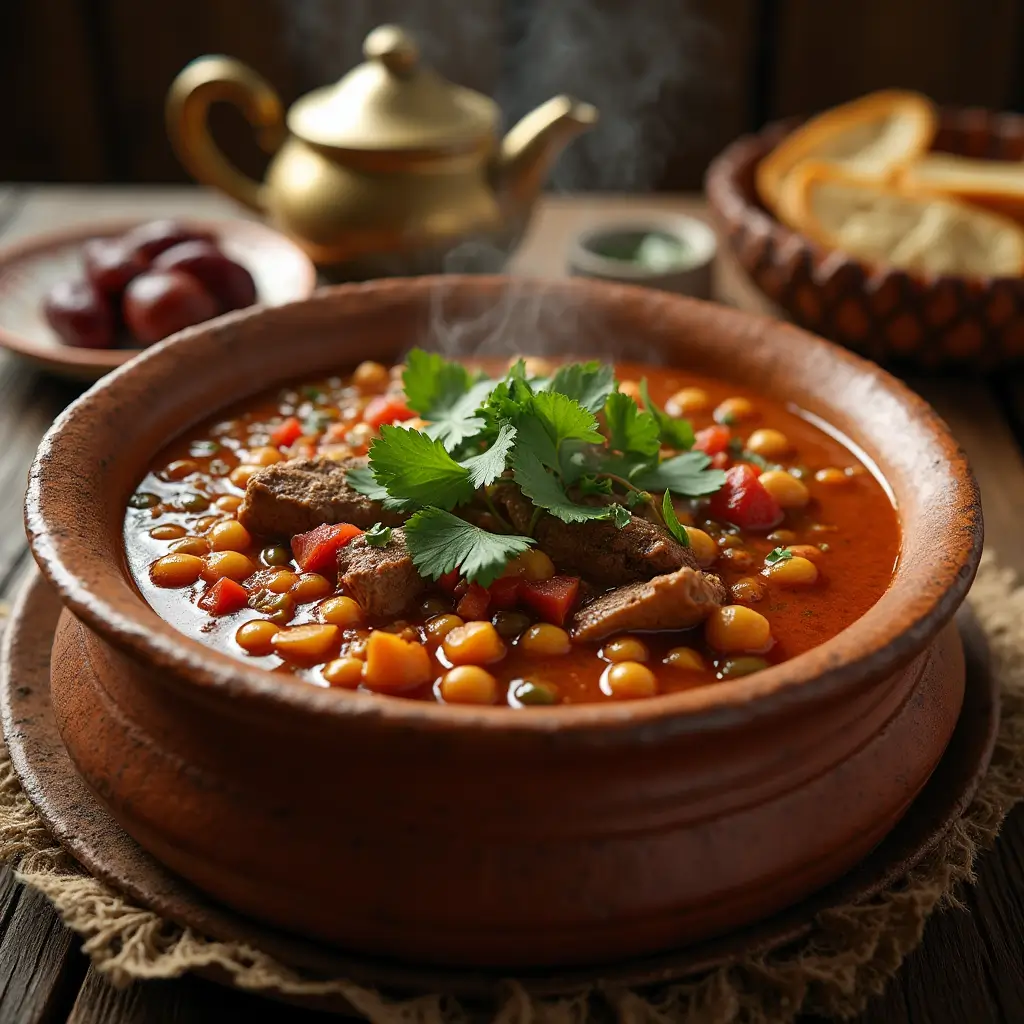
Harira is a rich and hearty soup made with tomatoes, lentils, chickpeas, and fragrant herbs. Traditionally served during Ramadan to break the fast, it’s also enjoyed as a comforting starter or light meal. The addition of lemon juice and fresh cilantro gives it a refreshing finish.
4. Zalouk (Eggplant Salad)
Zalouk is a flavorful cooked salad made with eggplant, tomatoes, garlic, and a blend of spices. It’s typically served as a dip or side dish, offering a smoky, tangy flavor that pairs beautifully with Khobz.
5. Pastilla (Sweet and Savory Pie)
Pastilla is a culinary masterpiece that showcases the perfect balance of sweet and savory. Layers of thin pastry are filled with spiced meat (often pigeon or chicken), almonds, and a dusting of powdered sugar and cinnamon. This dish is a true celebration of Moroccan ingenuity.
6. Bissara (Creamy Split Pea Soup)
Bissara is a humble yet satisfying soup made from dried split peas, olive oil, garlic, and cumin. It’s often enjoyed for breakfast or as a light meal, providing warmth and nourishment.
7. Msemen (Flaky Pancake Bread)
Msemen is a traditional Moroccan bread that’s folded and fried to a crisp, flaky perfection. It’s often served with honey or jam for breakfast or as a snack.
8. Briouats (Stuffed Pastries)
Briouats are small, triangular pastries filled with savory ingredients like spiced meat or cheese, then fried until golden and crispy. They’re a popular appetizer or snack, perfect for sharing.
Sweet Treats: A Taste of Moroccan Indulgence
No Moroccan meal is complete without a touch of sweetness. Moroccan desserts are a delightful blend of flavors and textures, often featuring nuts, honey, and spices. Here are two iconic treats:
1. Baklava
While baklava is enjoyed across the Middle East and Mediterranean, the Moroccan version is uniquely delicate. Layers of filo pastry are filled with nuts and drenched in honey, creating a dessert that’s both crunchy and syrupy.
2. Chebakia
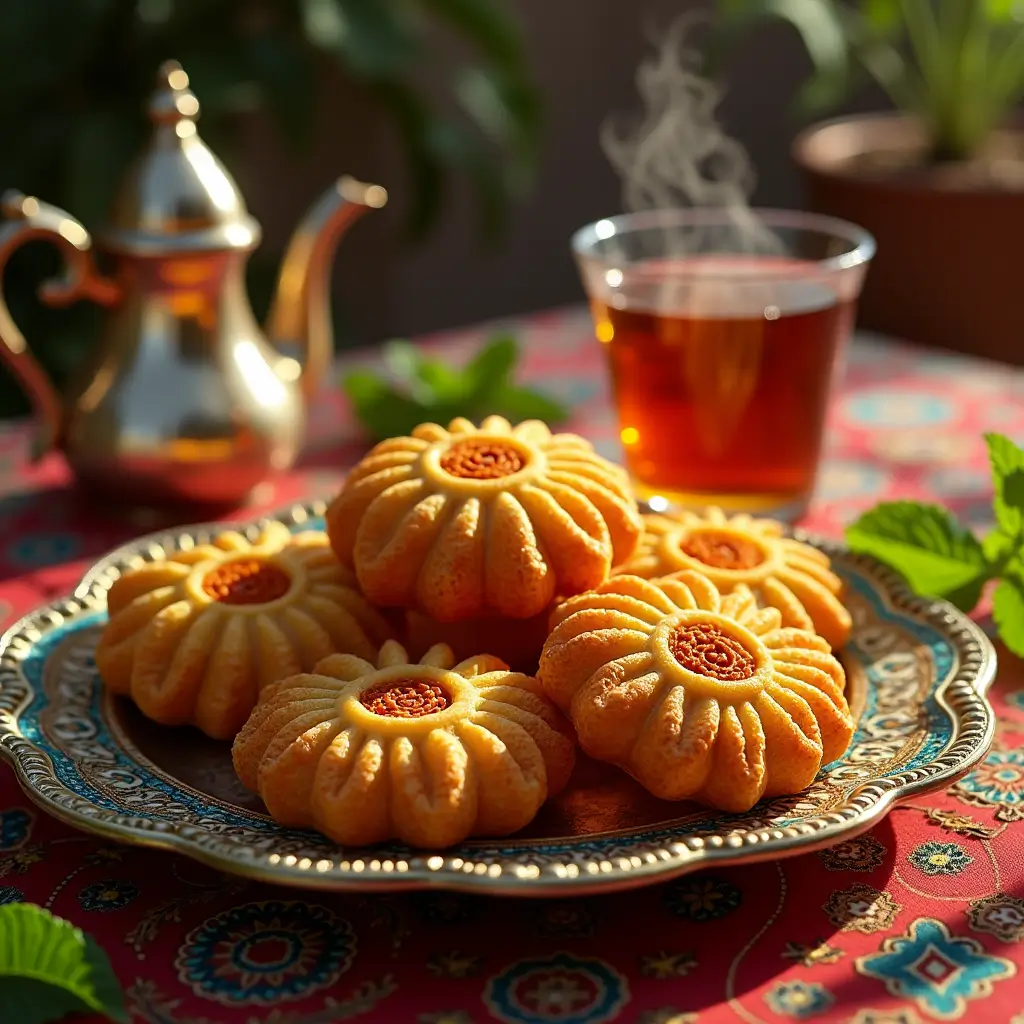
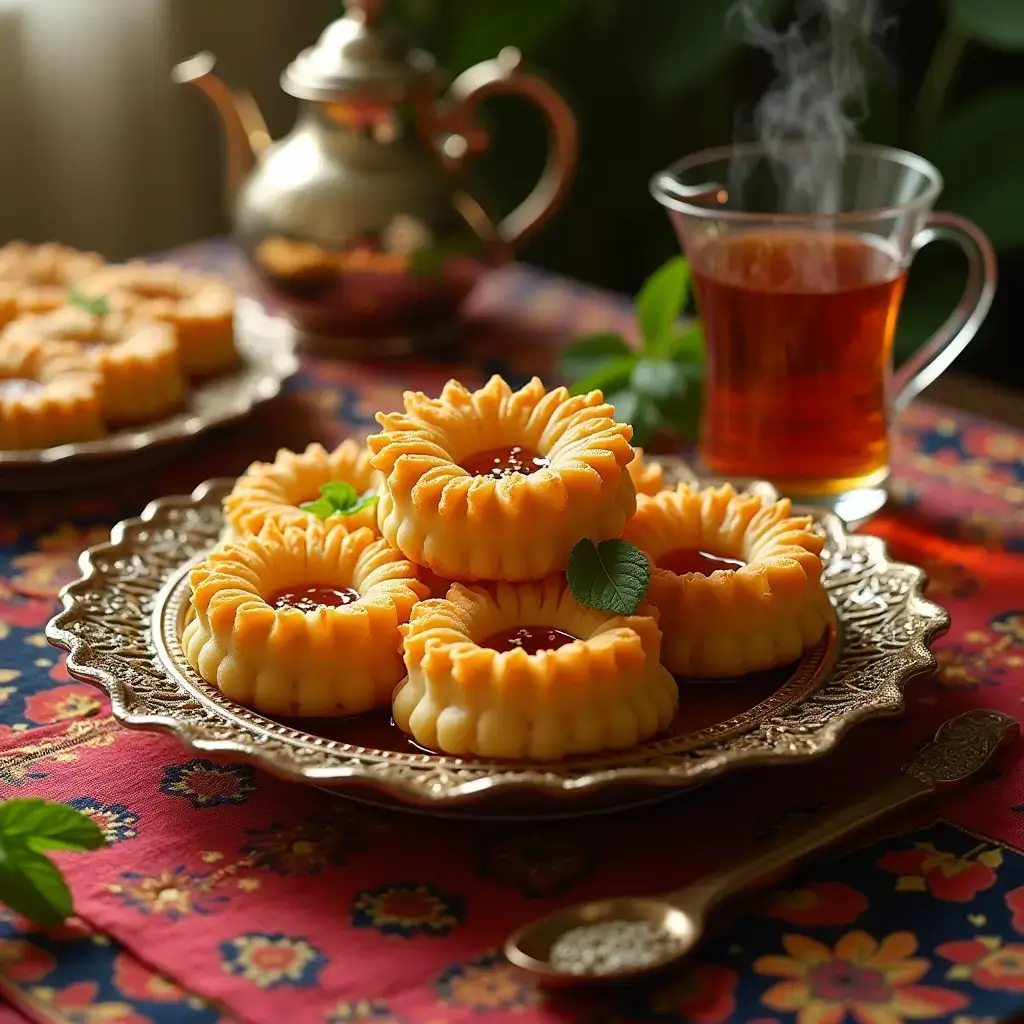
Chebakia is a flower-shaped cookie made from sesame dough, flavored with honey and orange blossom water. It’s often prepared during Ramadan and special occasions, offering a sweet and aromatic finish to the meal.
Mint Tea: The Essence of Moroccan Hospitality
Mint tea, or atai, is more than just a drink—it’s a symbol of Moroccan hospitality. This sweet, minty tea is traditionally served in small glasses and poured from a height to create a frothy top. It’s the perfect way to end a meal, offering a refreshing contrast to the rich flavors of Moroccan cuisine.
Moroccan Dining Traditions: A Celebration of Togetherness
In Morocco, dining is a communal experience that brings people together. Meals are often served on a low table, with everyone gathered around to share dishes. This tradition fosters a sense of warmth and closeness, making every meal a celebration of family and friendship.
Vibrant Markets: A Culinary Adventure
Moroccan food markets, or souks, are a feast for the senses. The vibrant displays of spices, fresh produce, and handmade goods create an immersive experience that’s as much about culture as it is about food. Exploring these markets is a must for anyone looking to uncover the secrets of Moroccan cuisine.
Uncover Culinary Secrets with Trips to Morocco
If you’re inspired to dive deeper into the world of Moroccan cuisine, consider joining a cooking class tour with Trips to Morocco. These tours offer a hands-on experience, allowing you to learn the art of Moroccan cooking from local experts. From mastering the perfect tagine to baking traditional bread, you’ll gain invaluable insights into this rich culinary tradition.
Conclusion: A Journey Through Flavor and Tradition
Moroccan cuisine is a celebration of flavor, culture, and tradition. From the aromatic spices to the communal dining experience, every aspect of Moroccan food tells a story. Whether you’re savoring a hearty tagine, indulging in a sweet treat, or sipping on mint tea, you’re not just eating—you’re experiencing a piece of Morocco’s soul. So why not take the next step and explore this culinary wonderland for yourself? Your taste buds will thank you.

